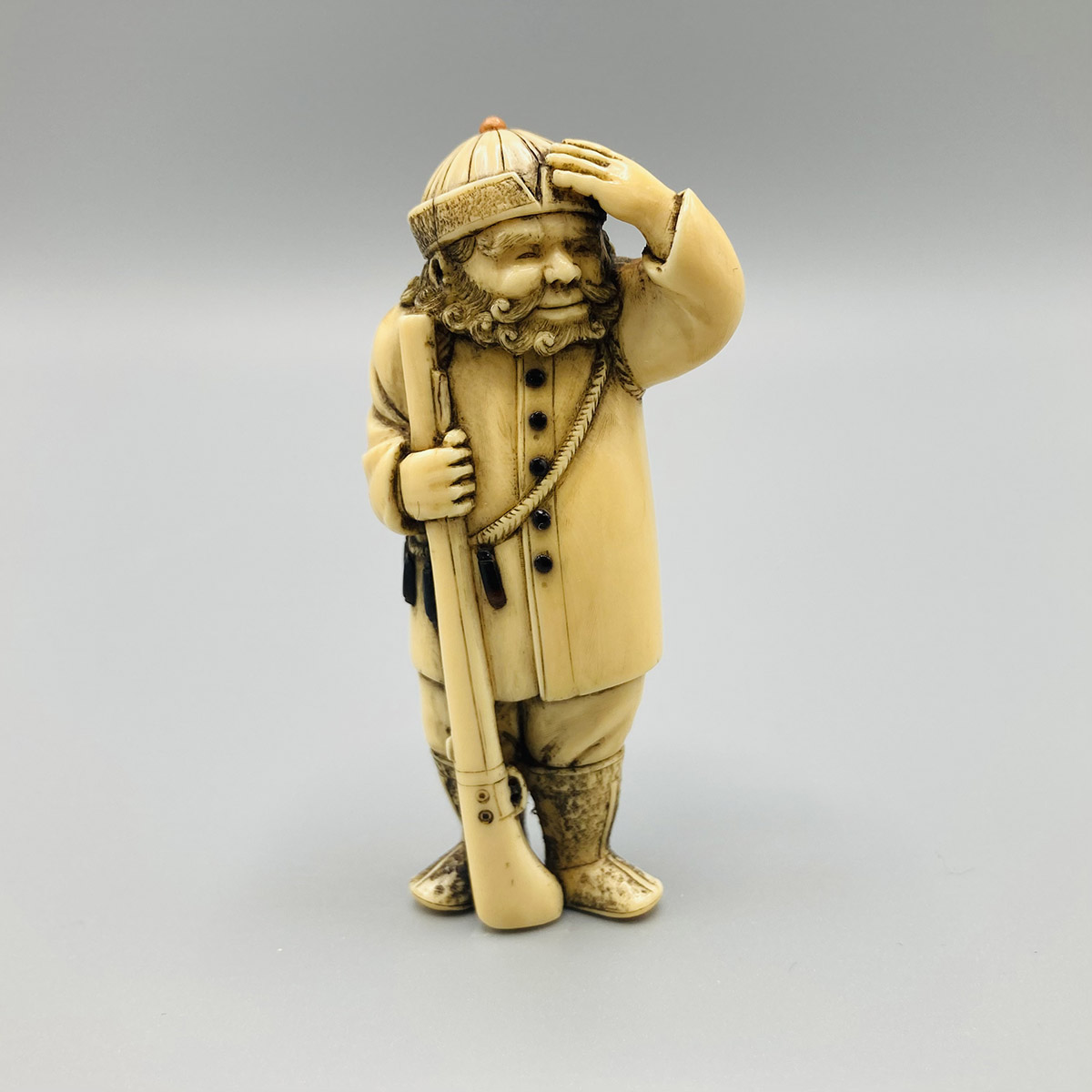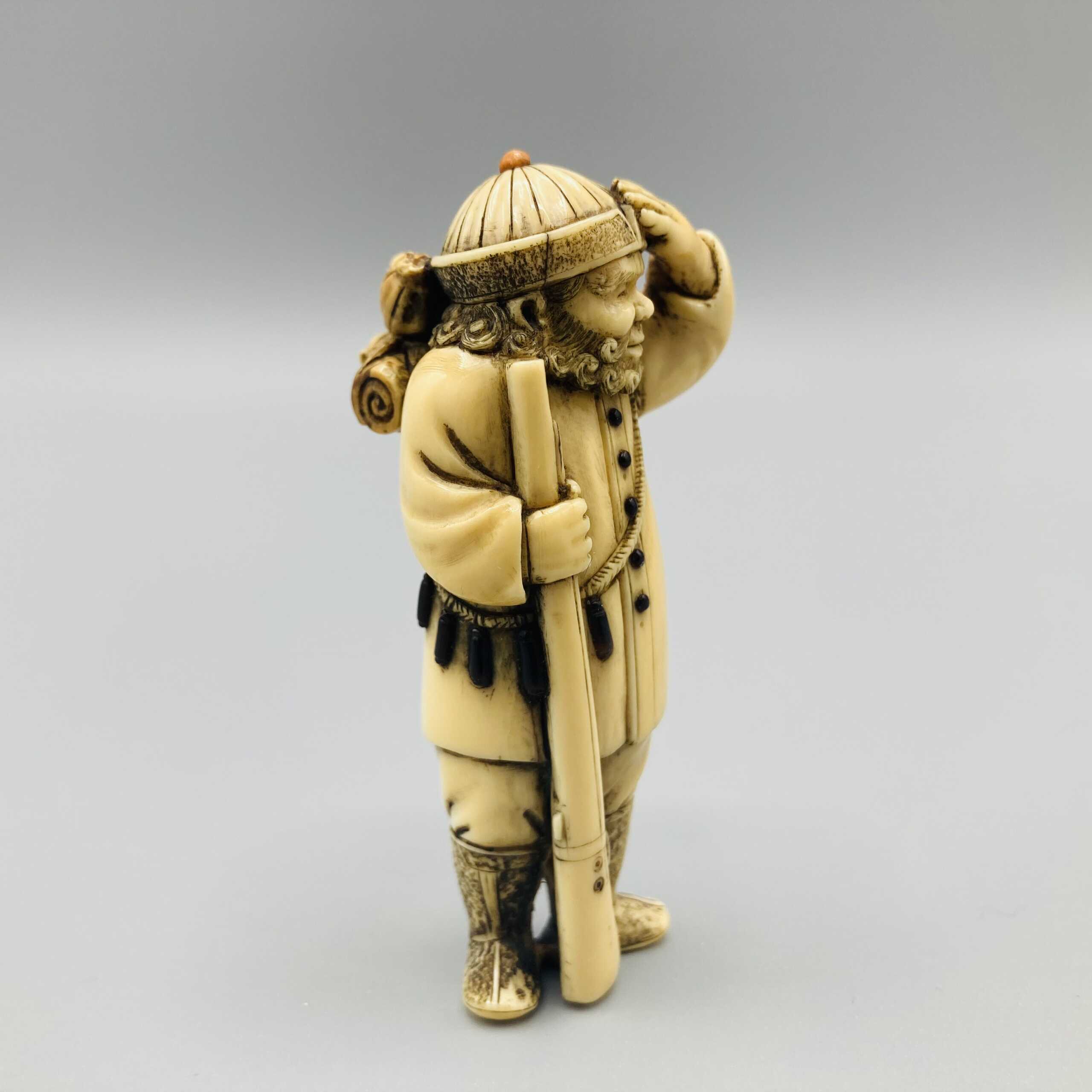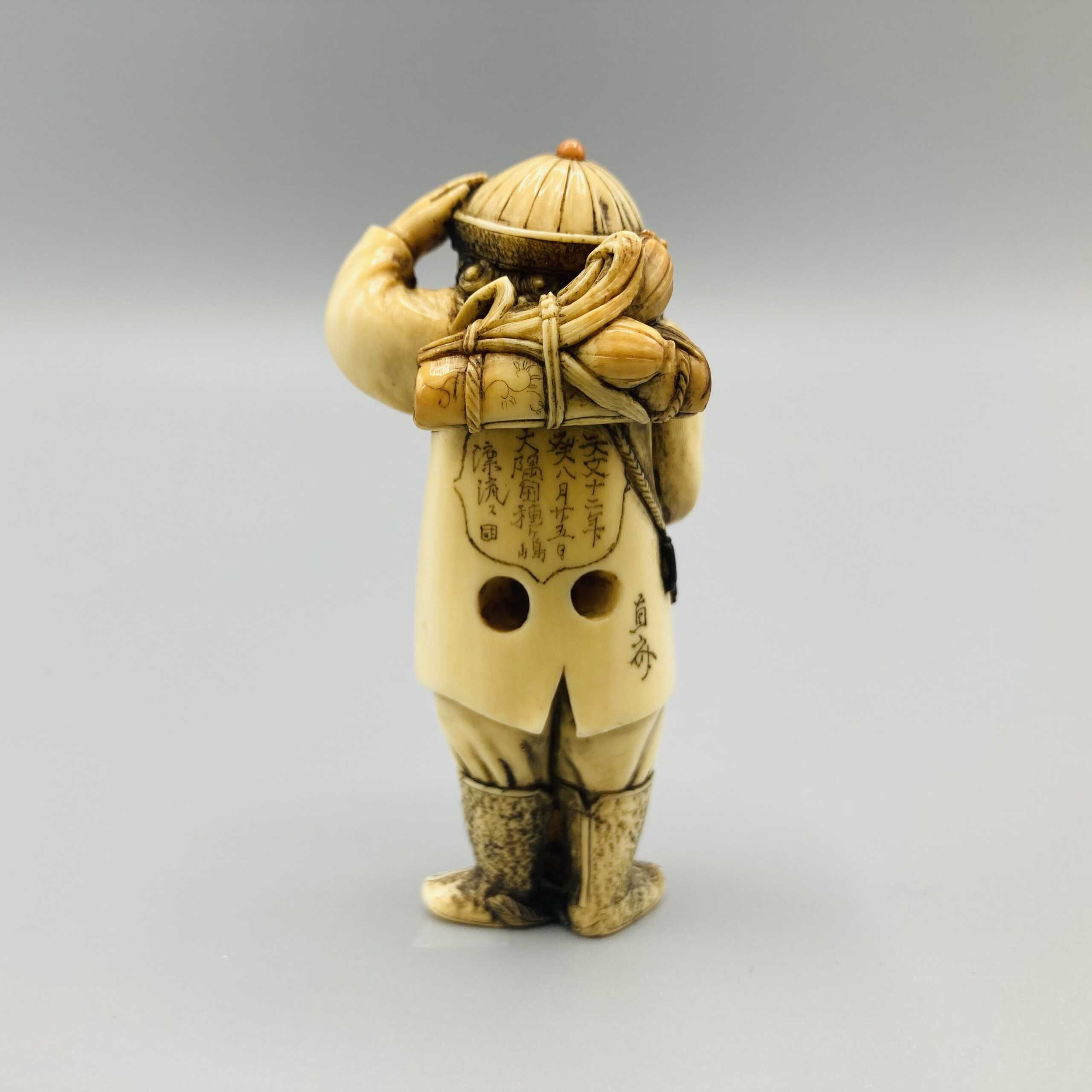Project Description
Ivory Netsuke of Fernandes Mendes Pinto, by Chokusai
Dressed as a hunter with his flintlock firearm resting on its butt, one hand touching his hat, which has a coral button at the crown. The buttons of his coat are inlays of dark horn, and horn charges hang from a cord slung around his neck. Strapped to his shoulder is a roll of cloth (possibly Chinese silk) with two large poppy heads. There is a feather under one of his feet
Signed: Chokusai with a long inscription. Osaka. Circa 1900
Height: 6.4 cm
Provenance:
Yamanaka, 1936
Guest collection, no. 2002
Mark T. Hindson, sold at his 6th sale, Sotheby’s London, 11th March 1969, lot 937
Eskenazi, London
Jacques Carré
Literature:
JINCS, 8/2, p. 53, fig. 3, illustrated in the article by J. Poole, Collecting Legends: Art and Ethnography, Jacques Carré’s Workshop at INCS Convention III
Hurtig, Masterpieces of Netsuke Art, p. 56, no. 159
N.K. Davey, Netsuke [Hindson collection], p. 42, no. 86
The inscription reads: tenbun ju-ni-nen ki hachigatsu ni-ju-go-nichi ōsumi (no) kuni tanegashima hyo ryu kore zu [a depiction of the drifting and wave tossed (foreigner who landed on) Tanegashima, Osumi (the southerly province of Kyushu) on the 25th day of the 8th month of Tenbun 12 (1543)]. The Portuguese Pinto claimed spuriously to be the first Portuguese to land on Japanese territory and is credited with the introduction of firearms to the country, which were known as Tanegashima in memory of where they first appeared. The poppies are no doubt an allusion to the opium trade, a later development. It is now generally acknowledged that Pinto was in Burma at the time and that it was António Mota and Francisco Zeimoto who were the first Europeans to set foot on Japanese soil. A Hokusai print of these two gentlemen is almost certainly the iconographic source for the netsuke, as one carries the scroll and poppies on his back, and the print has the same inscription as the netsuke
Price £3,500
Ref. MR3882



